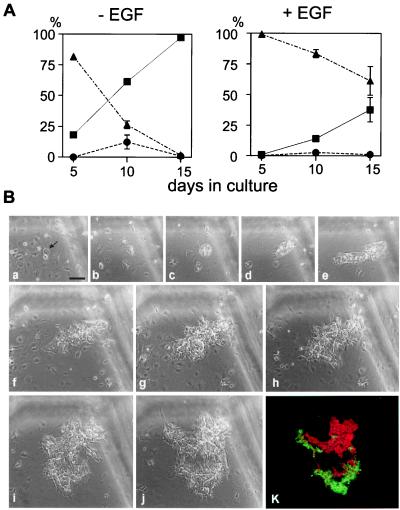Figure 4.
Bipotency of differentiation of multiparametric sorted hepatic progenitors. (A) Cells were fixed at 5-day intervals after starting the culture in the presence or absence of EGF and stained for ALB and CK19, and the proportion of the types of colonies was determined. ■, ▴, and ● represent the colonies containing ALB+ cells and CK19+ cells, only ALB+ cells, and only CK19+ cells, respectively. Data shown represent the means ± SD of triplicates. (B) The bipotent nature of a single RT1Al- hepatic progenitor. The hepatic progenitors were cultured at 52 cells/cm2 in the absence of EGF. A single cell was selected as shown by an arrow and was monitored for colony formation. Scratches at the top and the right in each field were made on the bottom surface of the culture plate by a needle. Phase contrast images of the culture at 24 h (a), day 2 (b), day 3 (c), day 4 (d), day 6 (e), day 7 (f), day 8 (g), day 9 (h), day 11 (i), and day 12 (j) after plating are shown. After 12 days of culture, the colony was double-stained for ALB and CK19. The merged immunofluorescence image (k) of ALB (red) and CK19 (green) corresponds to that shown in phase contrast (j). All magnifications are the same as a. (Bar = 100 μm.)

